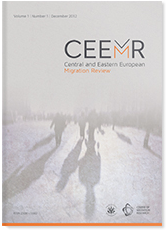From ‘Jarmark Europa’ to ‘Commodity City.’ New Marketplaces, Post-Socialist Migrations, and Cultural Diversity in Central and Eastern Europe
From ‘Jarmark Europa’ to ‘Commodity City.’ New Marketplaces, Post-Socialist Migrations, and Cultural Diversity in Central and Eastern Europe
Author(s): Gertrud HuwelmeierSubject(s): Social Sciences
Published by: Ośrodek Badań nad Migracjami / Uniwersytet Warszawski
Keywords: post-socialist migrations; markets; diversity; religious practices; transnational Vietnamese
Summary/Abstract: This article explores global bazaars run by migrants in Central and Eastern European (CEE) countries. Socialist and post-socialist mobilities have made a fundamental contribution to the establishment of new trading centres since the collapse of communism. Marketplaces change over time and are shaped by migration regimes, neo-liberalism and increasing cultural diversity. In bazaars we can study how diversity and economy mutually impact each other. I argue that post-socialist migrations have contributed to cultural diversity, thereby promoting the creation of new marketplaces, while everyday encounters in these localities result in conflict and/or solidarity among various groups. These processes are embedded in state regulations and are affected by the spatiality of bazaars in CEE urban surroundings. I conclude by focusing on religious diversity in the CEE bazaars, as cross-border religious practices not only help migrants to cope with social and economic hardships but also generate global interconnectedness.
Journal: Central and Eastern European Migration Review
- Issue Year: 4/2015
- Issue No: 1
- Page Range: 27-39
- Page Count: 13

